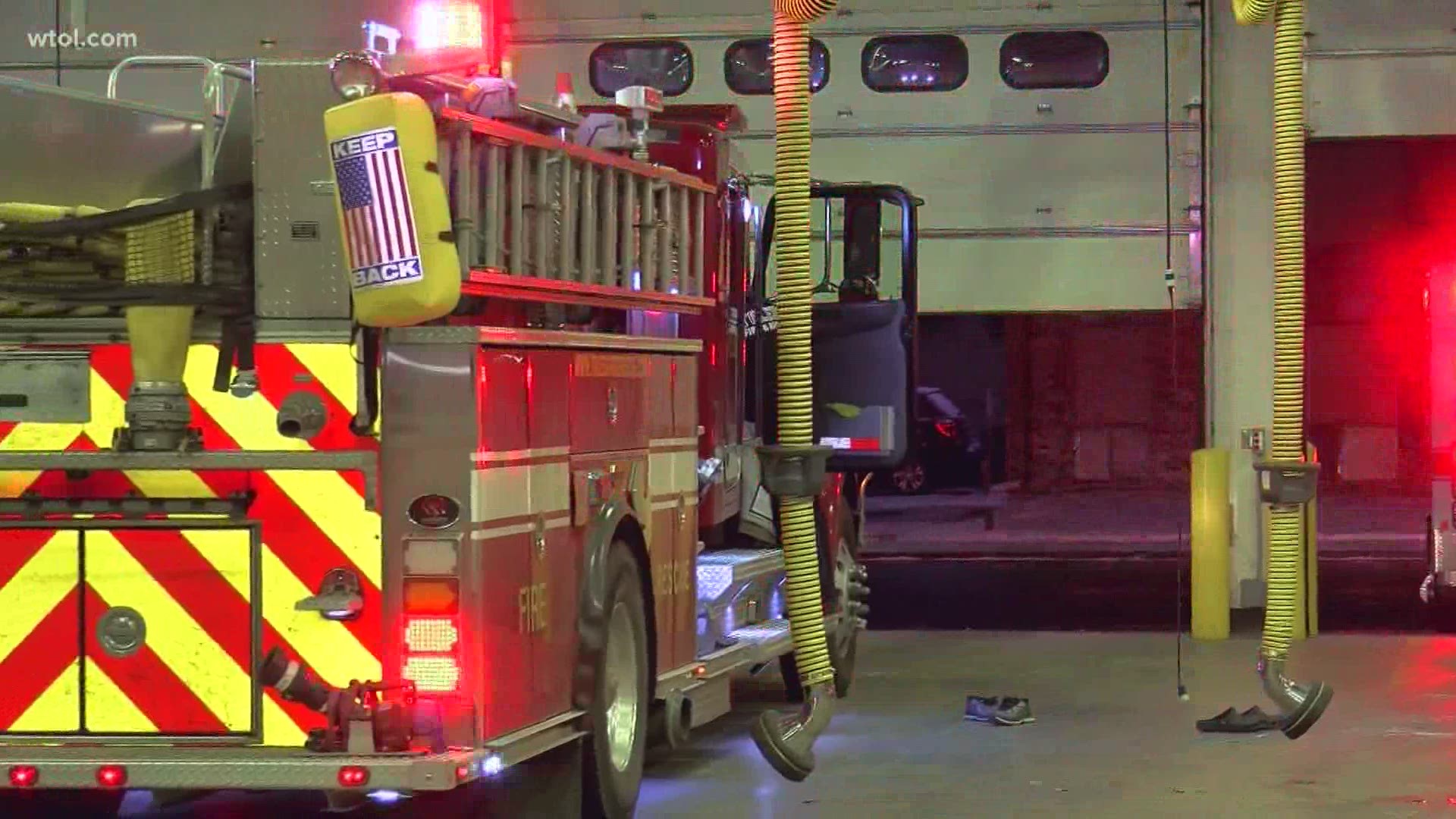TOLEDO, Ohio — Accidental house fires frequently increase around the holidays and during winter months. Now, the pandemic is playing a factor.
More people are staying at home: working from home, schooling kids at home and, of course, cooking at home.
Trying to balance so much in one environment can lead to risky distractions. According to the National Fire Protection Association, it is this multi-tasking that leads to accidents, and Toledo isn't immune.
In Nov. 2019, there were about 90 structure fires in the Glass City. Yet, in Nov. 2020, there were around 130. Both fire and EMS runs are up for Toledo Fire and Rescue.
"People are home now. They're traveling out less, so we're seeing more of those incidents happening at home," TFRD spokesperson Sterling Rahe said. "We do see accidental fires on the rise."
Rahe also explained that more people are putting up Christmas lights this year and are investing in real Christmas trees. It's a way to enjoy some holiday cheer during the pandemic, he said.
However, Rahe wants to remind everyone that real Christmas trees need water frequently.
"Dry Christmas trees can go up in flames in seconds," he warned.
Rahe noted that it's also important not to overload electrical sockets with Christmas lights and power strips.
Unattended cooking, however, continues to be a leading cause of Toledo's accidental fires.
"Some of those fires we initially investigated have been attributed to space heaters too close to combustibles, overloaded circuits. Unattended cooking is a huge issue right now," Rahe explained.
Cooking is the leading cause of accidental fires nationally according to the NFPA.
Heating is the second leading cause with an average of more than 52,000 fires each year.
Electrical distribution and lighting equipment is another leading cause involved in an annual average of more than 35,000 home fires.
With these concerns in mind, here are some ways to stay fire-safe during the COVID-19 pandemic and beyond:
- Stay in the kitchen while you are frying, boiling, grilling or broiling food. If you leave the kitchen for even a short period of time, turn off the stove.
- If you are simmering, baking or roasting food, check it regularly, remain in the home while food is cooking and use a timer to remind you that you are cooking.
- Keep anything that can catch fire — oven mitts, wooden utensils, food packaging, towels or curtains — away from your stovetop.
- Make sure all handles are turned inward, away from where someone can grab a hot handle or tip a pan over.
- Be on alert. If you are sleepy or have consumed alcohol, refrain from using the stove or stovetop.
- If you have young children in your home, create a “kid-free zone” of at least three feet (one meter) around the stove and areas where hot food or drink is prepared or carried.
- Keep anything that can burn at least three feet (one meter) away from heating equipment, like the furnace, fireplace, wood stove, or portable space heater.
- Have a three-foot (one meter) “kid-free zone” around open fires and space heaters.
- Never use your oven to heat your home.
- Remember to turn portable heaters off when leaving the room or going to bed.
- Always use the right kind of fuel, specified by the manufacturer, for fuel-burning space heaters.
- Install and maintain carbon monoxide (CO) alarms to avoid the risk of CO poisoning. If you smell gas in your gas heater, do not light the appliance. Leave the home immediately and call your local fire department or gas company.
- When charging smartphones and other digital devices, only use the charging cord that came with the device.
- Do not charge a device under your pillow, on your bed or on a couch.
- Only use one heat-producing appliance (such as a coffee maker, toaster, space heater, etc.) plugged into a receptacle outlet at a time.
- Major appliances (refrigerators, dryers, washers, stoves, air conditioners, microwave ovens, etc.) should be plugged directly into a wall receptacle outlet. Extension cords and plug strips should not be used.
- Check electrical cords to make sure they are not running across doorways or under carpets. Extension cords are intended for temporary use.
- Use a light bulb with the right number of watts. There should be a sticker that indicates the right number of watts.
Additionally, make sure smoke alarms are working on each level of your home, in each bedroom/near all sleeping areas. Test them monthly to make sure they’re working. NFPA also strongly encourages households to develop and practice a home escape plan to ensure that everyone knows what to do in a fire and can escape quickly and safely.

